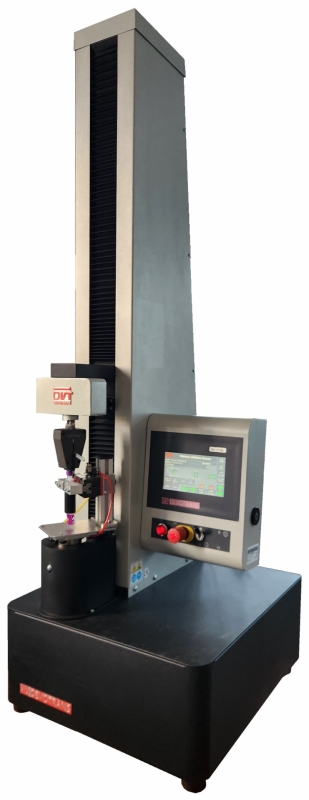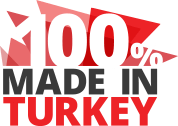TORQUE-METER DVT TO T C DVT TO T C
It is used to measure torque force for connectors used in the medical products industry.
It is used to conduct resistance to overriding tests, disconnection by unscrewing tests and resistance to separation from unscrewing tests.
INDUSTRIAL SECTORS OF USE
TECHNICAL INFORMATION
- Operating voltage: 220 Volt 50 Hz
- Emergency stop button
- Colour touch-screen
- Language options: Turkish, English, French and Russian
- Test report printout with software.
- Torque unit: N.m and lbf.
- Jaw options for different sample sizes
- 500 Newton tensile-compressive force
- Test capacity: 2 N.m.
- Adjustable rotation angle
- Movement: tightening and untightening (unscrewing) directions (to both sides: right and left)
- Resistance to overriding tests include screwing only, disconnection by unscrewing tests include tightening followed by untightening, resistance to separation from unscrewing tests include tightening followed by untightening for a given period of time
PRODUCTS SUBJECT TO TESTING
- Medical products.
- Medicine bottles and caps.
- Rotary keys.
- Metals, plastics etc.
OPTIONAL ADDITIONS
- Different jaws (holders) for different samples.
- Different test capacities for different samples.
- Different test weights for different samples.
- Different jaws (holders) for measuring torsion force of materials such as metals etc.
APPROXIMATE DIMENSIONS AND WEIGHT
- Width: 56 cm
- Depth: 50 cm
- Height: 151 cm
- Weight: 110 kg
TECHNICAL DOCUMENTATION
RELEVANT STANDARDS
- TS EN ISO 80369-7
- TS EN ISO 80369-20
ADDITIONAL INFORMATION
The torque-meter operates with a test capacity of 2 N.m and operates with a tensile-compressive force of 500 Newton.powered by 220 Volt 50 Hz. It performs tests in tightening and untightening directions, using torque units N.m and lbf.in. It is compliant with TS EN ISO 80369-7 and TS EN ISO 80369-20 standards. Equipped with a color touchscreen and multilingual interface, it allows torque testing of connectors using different jaws adapted to sample diameters. The device supports overriding, disconnection, and resistance to separation from unscrewing tests.


